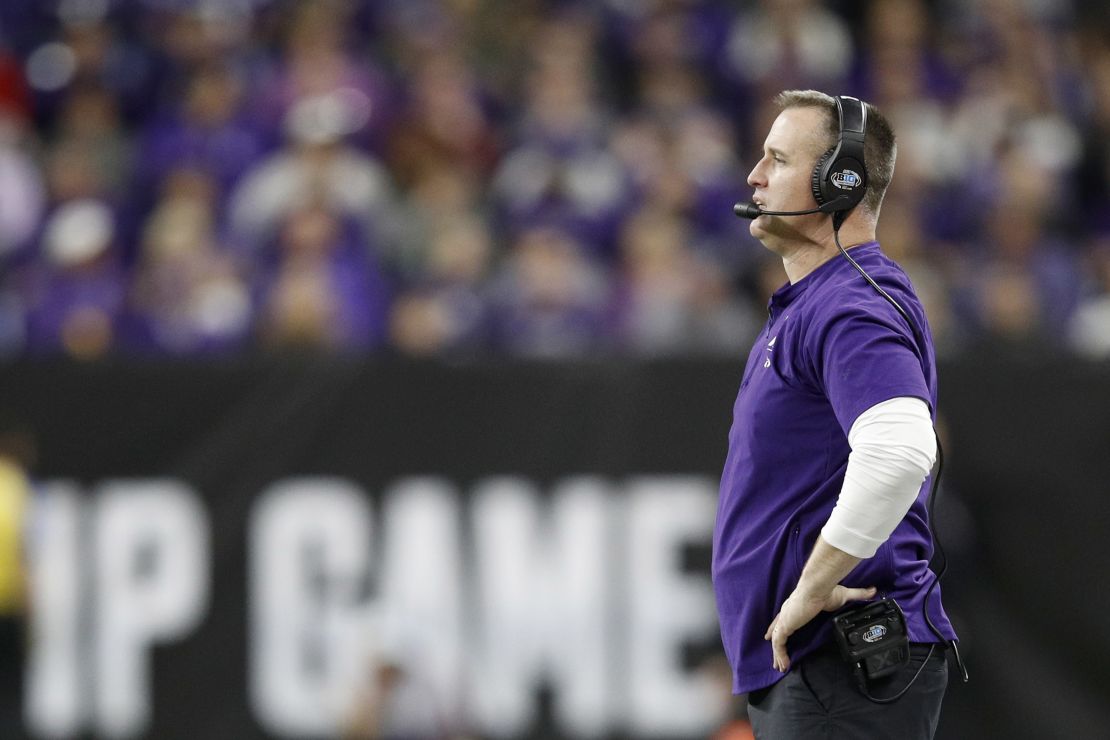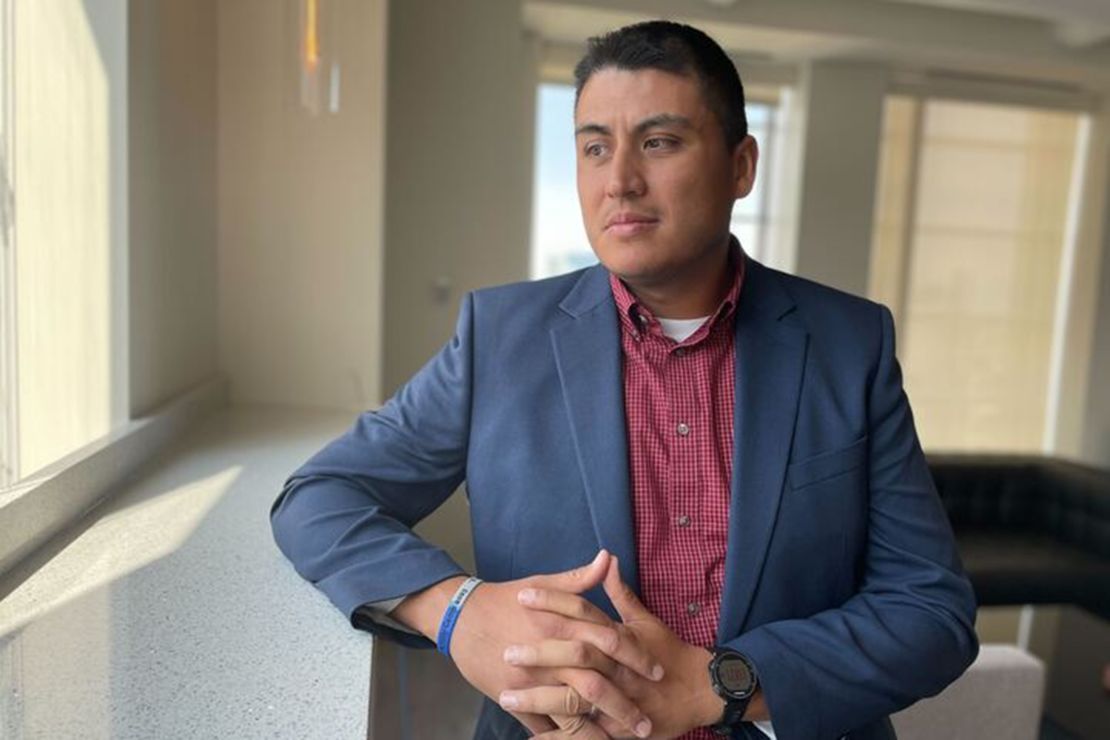Editor’s Note: If you or someone you know is struggling with suicidal thoughts or mental health issues, call or text 988 to reach the Suicide & Crisis Lifeline.
CNN
—
Million-dollar lawsuits, “toxic” cultures facilitating harassment and sexual abuse and college sport programs suspended. The dangerous – and sometimes deadly – consequences of hazing are prevalent at US universities, placing their sports programs in particular under growing scrutiny.
Athletic programs at Boston College, New Mexico State University and Northwestern University are just three US institutions that have been dealing with hazing allegations in 2023.
As calls for a change in culture among the student athlete community grow louder, here’s what you need to know about hazing and its troubling relationship with colleges in the US.
What is hazing?
Many college websites carry their own definitions of what constitutes hazing.
According to the organization StopHazing, it is an activity that “humiliates, degrades, abuses, or endangers” an individual seeking to join – or participate in – a group, “regardless of the person’s willingness to participate.”
Normally associated with Greek-letter groups – also called fraternities and sororities – hazing takes many forms but can involve consumption of alcohol, sleep deprivation, physical and verbal abuse or degrading sexual acts.
It is usually practiced by older students towards younger college classmates seeking to be inducted or initiated into a team, organization or society, and has historically taken place in educational institutions around the world, like European universities and British public schools.
The National Collegiate Athletic Association (NCAA) defines hazing as “any act committed against someone joining or becoming a member or maintaining membership in any organization that is humiliating, intimidating or demeaning, or endangers the health and safety of the person.
“Hazing includes active or passive participation in such acts and occurs regardless of the willingness to participate in the activities. Hazing creates an environment/climate in which dignity and respect are absent.”
How prevalent is it?
According to a 2018 survey of seven US universities published by the Journal of Student Affairs Research and Practice, 42.7% of respondents said that they had experienced hazing in varsity athletic teams.
That was the highest incidence of hazing among a student group or team, ahead of fraternities and sororities, in which 38.3% of respondents reported having experienced hazing.
More than a quarter (26%) of respondents involved in clubs, teams and organizations said that they had experienced hazing, while more than two-thirds (69.8%) of students said that they were aware of hazing on campus.
“The most common hazing practices across all types of student groups involved behaviors requiring high-risk drinking, social isolation, personal servitude, and humiliation,” the survey said.
“Students identifying as male reported participating in more behaviors meeting the definition of hazing than their female peers.”
What are its origins?
Hazing is an age-old practice and can be traced back to Ancient Greece when Plato observed it among his students in fourth-century B.C. Athens, according to Hank Nuwer, a journalist and author of several books on hazing.
Pennalism – a system of tormenting first-year university students – was exhibited at educational institutions in Europe throughout the Middle Ages, and forms of hazing later occurred at British public schools, roughly dating back to the 17th century.
By the mid-19th century, hazing was common on college campus fraternities in the US and has been prevalent ever since.
Nuwer has calculated that there was at least one US school, club or organization hazing death reported every year from 1959 to 2021, with the first being recorded in 1838.
The practice takes place in different settings around the world, including high schools, the military and workplaces, according to StopHazing.
Why has it become commonplace?
Nuwer told CNN in 2018 that hazing is driven by social cohesion and the need to make new friends in an unfamiliar environment.
“This collective need to belong is very, very strong,” he said, adding that peer pressure leads those overseeing the hazing to go along with questionable behavior so as not to upset the status quo.
Hazing practices can become locked in an ongoing cycle at universities as former victims eventually become perpetrators – a way of continuing what they see as tradition.
Recent examples
There has been considerable fallout following allegations of hazing among college sports teams this year.
On September 20, Boston College announced that it had suspended its men’s and women’s swimming and diving programs indefinitely for hazing, saying that it “does not – and will not – tolerate hazing in any form.”
In July, Northwestern University fired long-time football coach Pat Fitzgerald following allegations of hazing within the school’s football program.

Fitzgerald, who spent 17 seasons as head coach of the Wildcats, has said previously that he was not aware of the alleged hazing and that he was “disappointed” to learn of these allegations.
At the time, university president Michael Schill said that he had received “hundreds and hundreds of emails” describing how Fitzgerald had transformed the lives of current and former student athletes but added that “we have an obligation – in fact a responsibility – to live by our values.”
The head coach, Schill said, is ultimately responsible for a team’s culture.
The following week, attorneys representing at least 15 former Northwestern University student athletes announced plans to sue the university over allegations that its athletics department fostered a “toxic culture” which facilitated harassment and sexual abuse.
Civil rights attorney Ben Crump said that the former student athletes had spoken about “a pattern and practice of a culture that was predicated on physical intimidation, harassment, discrimination, abuse – both mentally and sexually – and it was normalized.”
Last month, former Northwestern University offensive lineman Ramon Diaz announced that he is suing the school and Fitzgerald over allegations of racism and hazing during his time on the team from 2005 to 2008.

“The social pressure and hazing on Northwestern’s football team was so severe that even unwilling participants were forced to conform to a culture of abuse, racial discrimination, bigotry and sexual exploitation in order to be part of the ‘Wildcat family,’” Diaz’s lawsuit states.
Northwestern spokesperson Jon Yates has said that the university does not comment on pending litigation, but told CNN, in response to Diaz’s lawsuit, that it is “committed to do whatever is necessary to address hazing-related issues.”
In February, New Mexico State University suspended its men’s basketball program over hazing allegations and fired head coach Greg Heiar days later.
Penalties for hazing
While 44 states carry anti-hazing laws, a hazing conviction often constitutes a minor misdemeanor, punishable by a fine of $500 and zero jail time.
At least 12 of those 44 states have tougher statutes on hazing, making it a felony if it results in death or serious injury.
Montana, Wyoming, South Dakota, New Mexico, Alaska and Hawaii currently have no anti-hazing laws in place.
Allegations of hazing can lead to lengthy and expensive litigation processes for universities.
In January, the family of Stone Foltz, a Bowling Green student who prosecutors said died from alcohol intoxication during a 2021 fraternity hazing, reached a $2.9 million settlement with the university.
The settlement was the largest payout by a public university in a hazing case in the state of Ohio, according to the family’s attorney.






